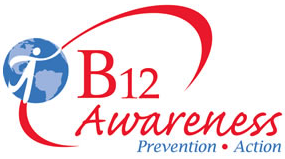RISK SCORES
Use the table below to add up your score and determine your risk of B12 deficiency.
Cobalamin Deficiency Risk (CDR) Score
- Low Risk: 0 to 1
- At Risk: 2 to 4
- High Risk: 5 or greater
I. Neurological Manifestations (+2)
- Paresthesias
- Weakness of arms, legs, or trunk
- Unsteady gait, balance problems
- Ataxia
- Dizziness or light-headedness
- Tremors
- Restless legs
- Lhermitte’s sign
- Romberg’s sign
- Abnormal Babinski reflex
- Visual disturbances
- Forgetfulness, short-term memory loss, or dementia
- Mental status changes
- Impotence, erectile dysfunction
- Urinary or fecal incontinence
- Impaired vibration, position sense
- Abnormal reflexes
- Seizures
- Paralysis
II. Neuropsychiatric Manifestations (+2)
- Depression, suicidal ideation
- Diagnosis of mental illness or on psychiatric medications
- Post-partum depression or psychosis
- Anxiety
- ADD/ADHD
- Personality changes
- Poor concentration or foggy thinking
- Paranoia
- Mania
- Hallucinations
- Psychosis
- Violent behavior
- Homicidal ideations
III. Hematologic Manifestations (+2)
- Anemia
- Macrocytosis
- Hypersegmented neutrophils
- Anisocytosis
- Leukopenia
- Thrombocytopenia
- Pancytopenia
IV. General Signs/Symptoms (+1)
- Generalized weakness or fatigue
- Shortness of breath
- Pallor or jaundice
- Frequent falls or near falls
- Loss of appetite/weight loss
- Frequent infections, poor wound healing
- Orthostatic hypotension
- Postural orthostatic tachycardia
- Occlusive vascular disorder or thrombotic events (e.g., PE, DVT, CVA, MI, portal vein thrombosis)
- Cervical dysplasia
- Intrauterine growth retardation
- Malnutrition
- Glossitis
- Tinnitus
- Skin hyperpigmentation or hypopigmentation
- Hepatomegaly or splenomegaly
V. Gastrointestinal Risks (+2)
- Decreased stomach acid or atrophic gastritis
- Gastroparesis
- Helicobacter pylori infection
- Giardiasis
- GERD or ulcer disease
- Gastrectomy (partial or complete), bariatric surgery
- Ileal resection (partial or complete)
- Malabsorption syndromes (e.g., Crohn’s disease, IBS, celiac disease)
- Pancreatitis, pancreatic exocrine insufficiency
- Small intestinal bacterial overgrowth
- Diphyllobothrium latum (fish tapeworm)
- Liver disease (e.g., cirrhosis, hepatitis C)
VI. (a) Population at Risk (+2)
- Vegans, vegetarians, macrobiotic diets
- MTHFR gene mutation
- Nitrous oxide administration or abuse
- Eating disorders
VI. (b) Population at Risk (+1)
- Age 50 and over
- Pregnancy
- Intrauterine growth retardation
- Autoimmune disorders (e.g., thyroid, IDDM, lupus)
- Family history of pernicious anemia
- Proton pump inhibitor or H2-blocker use
- Metformin use
- Alcoholism
- Dialysis patients
- AIDS
- Chemo- or radiation therapy
- Phenylketonuria (PKU)
- Down syndrome
Use the table below to add up your child’s score and determine his/her risk of B12 deficiency.
Pediatric Cobalamin Deficiency Risk (PCDR) Score
- Low Risk: 0 to 1
- At Risk: 2 to 4
- High Risk: 5 or greater
I. Neurological Manifestations (+2)
- Developmental delay or regression (motor, speech, language, or social)
- Hypotonia
- Poor suckling/swallowing
- Abnormal movements
- Ataxia
- Tremors
- Seizures
- Paresthesias
- Lhermitte’s sign
- Romberg’s sign
- Weakness of extremities
- Clumsiness or falling
- Dizziness
- Visual disturbances
- Impaired vibration, position sense
- Mental status changes
- Abnormal reflexes
- Paralysis
- Coma
II. Neuropsychiatric Manifestations (+2)
- Depression or apathy
- Suicidal ideations
- Diagnosis of mental illness or on psychiatric medications
- Anxiety
- ADD/ADHD
- Personality changes
- Poor concentration or foggy thinking
- Poor verbal fluency or problem solving
- Low IQ
- Paranoia
- Mania
- Hallucinations
- Psychosis
- Violent behavior or homicidal ideations
III. Hematologic Manifestations (+2)
- Anemia
- Macrocytosis
- Hypersegmented neutrophils
- Anisocytosis
- Leukopenia
- Thrombocytopenia
- Pancytopenia
IV. General Signs/Symptoms (+1)
- Abnormal head circumference or growth
- Anorexia, poor feeding/appetite
- Drowsiness or lethargy
- Dyspnea
- Failure to thrive
- Frequent infections
- Glossitis or stomatitis
- Hepatomegaly or splenomegaly
- Irritability
- Orthostatic hypotension
- Pallor or jaundice
- Postural orthostatic tachycardia
- Skin hyperpigmentation or hypopigmentation
- Systolic flow murmur
- Tinnitus
- Chronic vomiting, diarrhea, or constipation
- Weakness or fatigue
- Weight loss, no weight gain, or weight <25th percentile
V. Gastrointestinal Risks (+2)
- Malabsorption syndromes (e.g., Crohn’s disease, IBS, celiac disease, gluten sensitivity)
- GERD
- Gastroparesis
- Helicobacter pylori infection
- Giardiasis
- Gastrectomy (partial or complete)
- Ileal resection (partial or complete)
- Small intestinal bacterial overgrowth
- Pancreatitis, pancreatic exocrine insufficiency
- Liver disease
- Diphyllobothrium latum (fish tapeworm)
VI. (a) Population at Risk (+2)
- Vegans, vegetarians, macrobiotic diets (mom or child)
- MTHFR gene mutation
- Nitrous oxide administration or abuse
- Eating disorders
VI. (b) Population at Risk (+1)
- Proton pump inhibitor or H2-blocker use
- Metformin use
- Breastfed children
- Pregnancy (teens)
- Family history of pernicious anemia
- Autoimmune disorders
- AIDS
- Chemo- or radiation therapy
- Low birth weight
- Neural tube defects, cleft lip/palate, or congenital heart defect
- Hydrocephalus
- Phenylketonuria (PKU)
- Down syndrome
